|
Click pictures for a larger version.
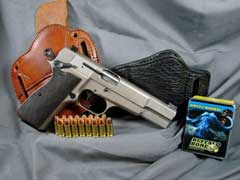

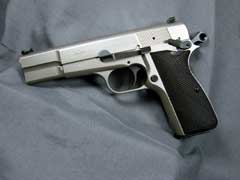
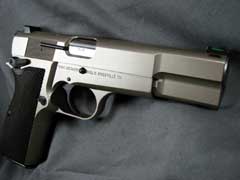
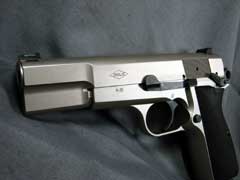
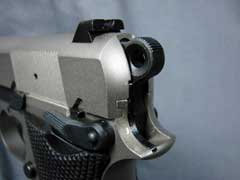
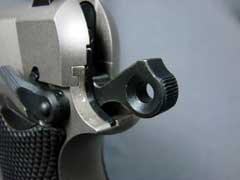
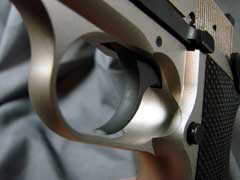

ConcealedCarry.com
Digital Trigger Pull Gauge.
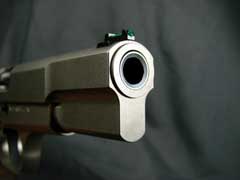
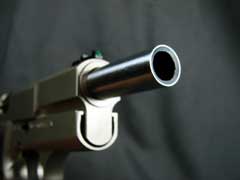
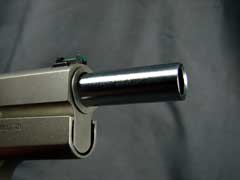
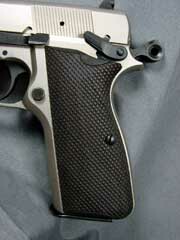
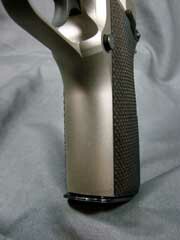
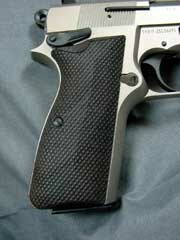
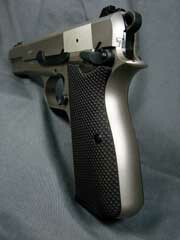
Black checkered G10 grips.
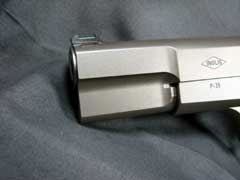
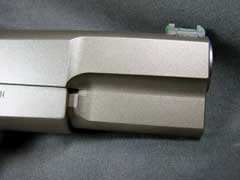
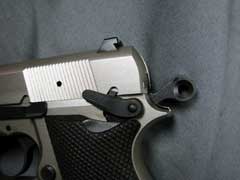
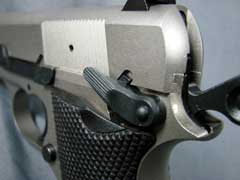
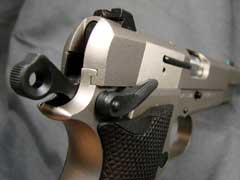
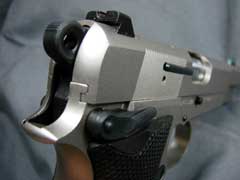
Ambidextrous Thumb Safety.

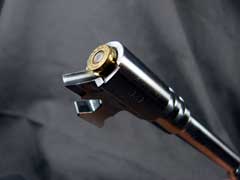
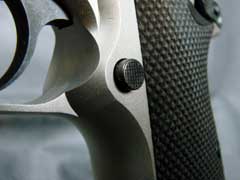
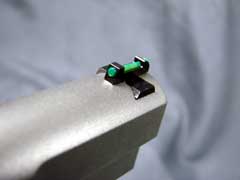
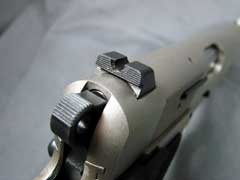
Green Fiber Optic front sight (top) and serrated U-Notch rear sight (botom)
are drift-adjustable for windage and elevation.
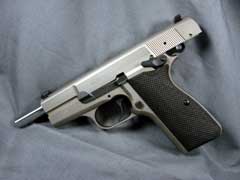
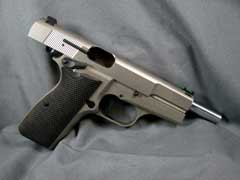
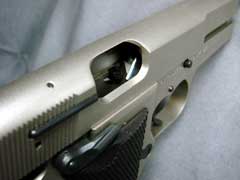
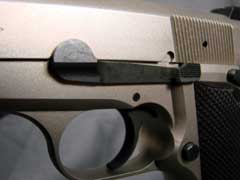
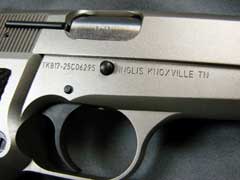
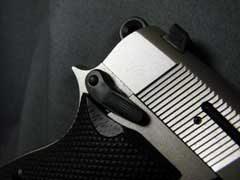
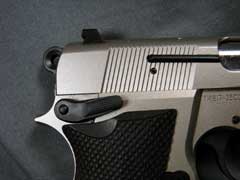
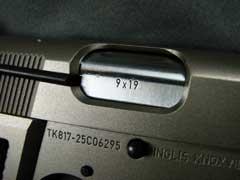

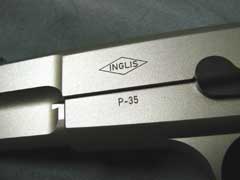
|
|
The
greatest firearms designer who ever lived was John Moses
Browning, and this fact is beyond dispute. From Browning's
fertile mind sprang a great variety of firearms, many of which
remain popular well over a century after their introductions:
from single-shot rifles, to manually-operated repeating rifles,
to semi-automatic rifles, to semi-automatic pistols, to
fully-automatic machine guns, to anti-aircraft and anti-tank
Military machines, the world has never seen the equal of the
humble Utah gun designer's genius.
John
Browning's first design remains one of my favorite firearms: the
simple, elegant Winchester Model 1885 single-shot rifle. Perhaps
Browning's most famous design, the 1911 pistol, remains wildly
popular 114 years after its adoption by the U.S. Military, and
with good reason. But Browning's final design was, in many ways,
his best pistol design: the P-35, or, as it came to be known,
the "Grand Puissance" or "High Power".
When
the French military decided in 1923 to adopt a new sidearm,
Fabrique Nationale (FN) decided to pursue the contract, and they
turned to John Browning, with whom they had already enjoyed a
long and fruitful relationship. The French had high expectations
for their new sidearm: it had to be compact, rugged, dependable,
powerful, safe, possessed of a high magazine capacity, and
simple enough for the average soldier to service in the field.
Further complicating the pistol's development, Browning had sold
the rights to his landmark 1911 pistol design to Colt, so
Browning needed to design an entirely new pistol from the ground
up in order to avoid violating his own earlier patents. Browning
filed the U.S. patent for his new pistol in 1923, and it was
approved in 1927; this was after Browning's death in 1926, and
before he completed the pistol's final design, so FN designer
Dieudonné Saive completed the design, making significant
enhancements to it. Browning's new design included an all-new
locking mechanism, and Saive contributed a revolutionary
staggered-feed "double stack" magazine that allowed
for greater magazine capacity than earlier designs; these
innovations remain the standard in today's modern pistols,
almost a century later. Also worthy of note: among Browning's
innovations which did not find their way into the final version
of the pistol was a striker firing mechanism, which would
finally become immensely popular over 50 years after Browning's
death.
Unfortunately
for the French, France chose not to adopt the final version of
the pistol, leaving Belgium as the first to adopt the P-35,
better known as the High Power, in 1935. Germany overran Belgium
in 1940, taking over FN's Herstal plant, but both design and
designer were smuggled out in time, and the pistol resumed
Free-World production at the John Inglis Co. in Toronto, Canada.
After the War, the High Power resumed production at FN's Herstal
plant (among other locations) and was commercially introduced to
the U.S. market in 1954 under the Browning Arms Co. name, which
was owned by FN's parent company. FN High Power production
continued until 2018, when the High Power was finally dropped by
FN / Browning, much to the disappointment of those of us who
love the Hi Power design. Thankfully, FNH-USA has just
re-introduced the High Power, and although I have yet to handle
one, they seem to be very nicely made, however at a fairly steep
price. Also, original FN High Powers can be found on the used
market, but collector value on these has skyrocketed, beginning
even before their discontinuation. Other than that, the only way
to get a nice High Power in recent years has been to have one
custom-made by one
of a very few shops offering the model, but these
best-quality custom High Power pistols are beyond the financial
reach of the vast majority of shooters, typically costing
several thousand dollars per pistol. For many years now, a
high-quality High Power pistol at an accessible price point has
been little more than an unrealized dream, but now SDS Arms has
re-introduced the Inglis Manufacturing name, along with the
Inglis P-35 pistol, and it is a Dandy pistol at a very
affordable price.
SDS
Arms' Inglis P-35 pistol line consists of several models,
differing mainly in finish. All Inglis P-35 pistols are made in
Turkey to a high quality standard, and forged from quality
steel; no cast or MIM parts are used. The base model L9A1 is
finished in black Cerakote® and features plastic Military-style
grips and Military-style sights; the P-35B is also finished in
black Cerakote®, with checkered walnut grips and fiber-optic
front sight; the P-35 N (which is the model sent to me for
review) is finished in a beautiful satin electroless nickel,
with checkered G10 grips and fiber-optic front sight; and the
top-of-the-line GP-35 model's slide and frame are beautifully
color case hardened, with walnut grips and fiber-optic front
sight.
The
Inglis P-35 N's accent parts (hammer, trigger, magazine release,
slide release, thumb safety, extractor, pins, and sights) are
finished in black Cerakote®, which creates a very pleasing
aesthetic contrast to the satin nickel finish of the frame and
slide. The hammer features a ring-type spur, also known as a
"Commander spur", which eliminates the tendency of the
original P-35's extended hammer spur to pinch the web of the
shooter's hand between the hammer spur and the frame's
beavertail. The thumb safety is extended and ambidextrous, which
is only available as an extra-cost option (if at all) on other
High Power brands. The excellent fully-checkered G10 grip panels
are similarly black, contrasting nicely with the satin nickel
frame and matching the accent parts, and are relieved at the top
of each grip panel to make it easier to access the thumb safety.
The
barrel is 4.7 inches in length, and finished in hard chrome for
durability. John Browning's design for the P-35 utilized an
integral barrel ramp for improved feeding, which was a distinct
improvement over the earlier 1911 pistol's frame-mounted feed
ramp. The 1911's frame-mounted feed ramp required the bullet to
travel from the magazine over a transition between the feed ramp
and the barrel's chamber; this was not really a problem as long
as the common ammunition of that time (Military "Ball"
or round-nose full metal jackets) was used, but as more modern
hollowpoint bullets became common, this transition became more
of a problem, as feeding jams became the norm. The P-35's
integral barrel ramp proved to be far better than the older
design for this, and Inglis has further refined the design of
the barrel's feed ramp geometry to perform even better with
modern bullet designs. During my shooting sessions, the Inglis
P-35 N was able to feed hollowpoint bullets of various designs
and weights without a bobble.
One
area where the original P-35 was lacking was the trigger pull.
John Browning's new design used a pivoting trigger, rather than
the 1911's straight-pull design, and this was not a problem in
its own right; however, the French required that the pistol be
incapable of firing without a magazine present, and this
"magazine disconnect safety" created a drag on the
trigger parts, resulting in a heavy, gritty trigger pull. While
I am sure the French had their reasons for requiring this, I
have always thought the concept a bit silly: why would one want
their weapon to be disabled without a magazine inserted? A great
many Browning P-35s have been modified over the decades to
eliminate this magazine disconnect, yielding a much improved
trigger pull at the expense of a bit of gunsmithing. Recognizing
this design problem with the original P-35, Inglis has
thankfully done away with the magazine disconnect, and as a
result, the trigger pull on the P-35 N is wonderful: after just
a bit of takeup (approximately 1/16"), the trigger releases
cleanly at a consistent 3 pounds of pressure. The P-35 N's
excellent trigger greatly contributes to the fine accuracy I
observed during my shooting sessions.
The
sights commonly found on the original Browning P-35 were the
rudimentary Military-style sights of the day: a low-profile
rounded-blade fixed front sight along with a low-profile
dovetail-mounted rear sight. These worked fine for their
intended purpose, but modern shooters demand better, and Inglis
has answered. The Inglis P-35 N's front sight is a blackened
steel post, dovetail-mounted for windage adjustment, and
features a green fiber optic rod; this fiber optic really pops
in any lighting condition short of total darkness, and
automatically glows brighter when more light is present. The
rear sight is similarly blackened steel and dovetail-mounted,
with a U-shaped notch to match the front sight's fiber optic
insert, and is finely horizontally-serrated on its aft surface
to eliminate sun glare. The sights on the Inglis P-35 N are both
precise and quick to acquire. I can't imagine why anyone would
want to replace the standard sights, but if desired, any sights
using a standard Browning® dovetail can be used.
Saive's
"double-stack" magazine design for the original
FN/Browning P-35 was nothing short of revolutionary, and
magazine designs based on the P-35 are commonly seen today. The
original P-35's magazine allowed for greater firepower while
maintaining a manageable size, with a then-unheard-of thirteen
round payload. Modern spring technology has allowed the P-35's
magazine capacity to be increased to fifteen rounds without
enlarging the magazine, and the Inglis P-35 N includes two such
magazines. These magazines are made in Italy to a high standard
of quality, featuring a polished blued-steel body and floor
plate, and a polymer follower. These are very nice magazines,
and they also function perfectly in my original FN/Browning
pistols. Also, if desired, original thirteen-round FN/Browning
High Power magazines function perfectly in the Inglis P-35 N.
Shooting the Inglis P-35 N was nothing short of a
joy. The High Power has always been a favorite of mine, largely
due to its unmatched ergonomics: the slim-tapered slide, the
heft of the pistol, and the perfectly hand-filling shape of the
grip, when coupled with the mild recoil of the 9mm cartridge,
combine for a shooting experience like no other, both nostalgic
and modern at the same time. Accuracy was satisfying, with a
variety of 9mm loads, both standard-pressure and +P, grouping
nicely to point of aim at five yards when fired at paper
targets. Targets of opportunity bounced nicely, with the P-35 N
yielding minute-of-soda-can accuracy at longer ranges. The
Inglis P-35 N ran all types of hollowpoint ammo with 100%
reliability, making it a fine choice for either a fun afternoon
on the range or as a tool upon which you can stake your life, or
the lives of your loved ones.
Specifications:
Inglis P-35 N 9mm Semi-Auto Pistol
| Action
Type |
Semi-Auto,
Single Action |
| Caliber |
9mm
(AKA 9x19mm, 9mm Luger, 9mm Parabellum) |
| Overall
Length |
7.5
Inches |
| Overall
Height |
5
Inches |
| Overall
Width |
1.6
Inches |
| Weight
(Unloaded) |
1.84
Pounds |
| Frame/Slide |
Forged
Steel, Electroless Nickel Finish |
| Barrel |
4.7
Inches, Hard Chrome Finish |
| Sights |
Fixed
- Black Serrated Rear / Fiber Optic Front, Browning®
Dovetail Sight Cuts |
| Hammer |
Ring-Type
(AKA "Commander Style), Black Cerakote® Finish |
| Safety |
Extended,
Ambidextrous, Black Cerakote® Finish |
| Trigger |
Curved,
Smooth, Black Cerakote® Finish |
| Trigger
Pull |
3
Pounds, 0.2 Ounces |
| Grips |
G10,
Fully Checkered |
| Magazine
Capacity (w/ Included Mags): |
15+1 |
| Magazines
Included |
2 |
| Accessories
Included |
Lockable
Hard Plastic Case, Owner's Manual, Trigger Lock, Chamber
Flag, Cleaning Kit |
| MSRP
as of August 2025 |
$633.99
US |
When
it comes to carrying the Inglis P-35 N, there are a wide variety
of holsters available, and any holster made to fit the High
Power is perfect for the P-35 N. Also, holsters made to fit the
1911 pistol can be pressed into service, and I used a couple of
my favorite 1911 holsters to carry the P-35 N, both from Rob
Leahy at Simply Rugged Holsters.
Simply
Rugged's DEFCON 4 holster is an excellent and versatile carry
solution, holding the pistol high and tight to the user's body
for concealment. A high ride pancake design, the DEFCON 4
features a double-laminated front and back, and a "Flab
Tab" extension on the back to prevent the user's side flesh
from being gouged by the pistol. The DEFCON 4 can be had with
either two or three 1-3/4" belt slots, allowing for a
variety of carry modes, from neutral cant to FBI cant to cross
draw; the three-slot option also allows the DEFCON 4 to be
chest-carried using Simply Rugged's excellent Chesty Puller
Suspension System. The DEFCON 4 also includes removable
Inside-the-Waistband (IWB) straps, maximizing the holster's
versatility; the DEFCON 4's reinforced front and back helps the
mouth of the holster to stay open when carried IWB. Simply
Rugged's DEFCON 4 holster is made from the finest leather, and
is available in Tan, Black, or Oxblood, along with a variety of
decorative stamping / carving options as well as a variety of
exotic leathers, at a very reasonable base price of $140.00.
Simply
Rugged's CID Slide is a solid entry-level pancake holster,
featuring a minimalist design that leaves the barrel
unprotected. The CID Slide was designed by Rob Leahy for a
friend who is a Criminal Investigator Detective (CID), as a
holster offering maximum comfort with minimum bulk, and it
excels as a deep-concealment rig. The CID Slide is also
available in Tan, Black, or Oxblood, with many decorative
options and exotic leathers as extra-cost options, at a base
price of only $50.00.
I
have always been a Big-Bore guy, so I naturally love my 1911s,
but even though it's "only a 9mm", the Browning High
Power has always held a special place in my heart. There is
something about John Browning's final pistol design that stirs
the soul as no striker-fired, polymer-framed mere tool can. The
original FN/Browning High Power pistol's ergonomics are second
to none, and the balance is absolutely perfect; if the High
Power could be made as a 45 without losing the feel of the grip
or that superb slim-tapered slide profile, it would be, to my
mind, the perfect pistol. Still, I have to admit that the 9mm is
a wonderful cartridge, and in modern hollowpoint loads, it gives
up little if anything to its larger counterpart. John Browning's
final triumph was a magnificent pistol in 1935, and it remains a
magnificent pistol today. The Inglis P-35 N is a worthy modern
version of the original High Power design, and even improves
upon the original in several aspects, at a price that is far
less than other High Powers on today's market. The Inglis P-35 N
9mm pistol retails for only $633.99, and is backed by a 1-year
Limited Warranty and a Lifetime Service Plan.
Check
out the entire Inglis line at https://sdsarms.com/inglis/inglis-firearms/,
as well as the other brands offered by SDS Arms (Tisas USA,
Tokarev USA, MAC, and Spandau Arms) at https://sdsarms.com/
Buffalo Bore Ammunition: https://www.buffalobore.com/
Simply
Rugged Holsters: https://www.simplyrugged.com/.
Hornady® Ammunition: https://www.hornady.com/
Order Ammo Online at Lucky
Gunner: https://www.luckygunner.com/handgun/9mm-ammo
Grizzly Cartridge Co.: https://grizzlycartridge.com/
Boge Quinn
  
Got something to say about this article?
Want to agree (or disagree) with it? Click the following link to
go to the GUNBlast Feedback Page.
|
|
Click pictures for a larger version.

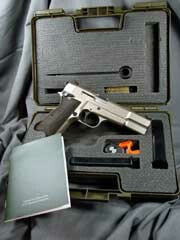
Inglis P-35 N comes with Two (2) steel 15-round
magazines, Lockable
Hard Plastic Case, Owner's Manual, Trigger Lock, Chamber
Flag, and Cleaning Kit.
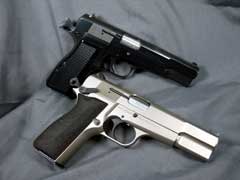
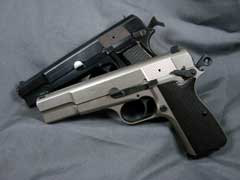
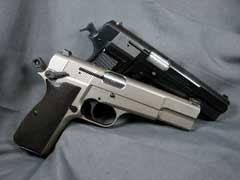
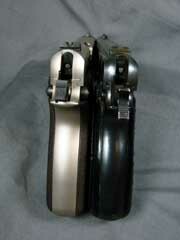
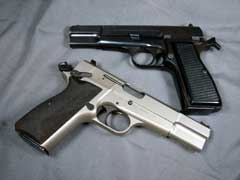
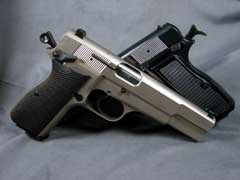
Inglis P-35 N compared to 1980-production FN / Browning High Power.
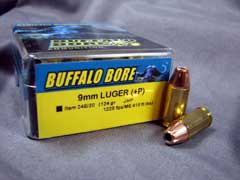
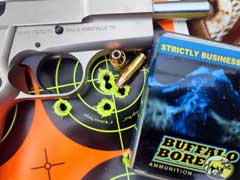
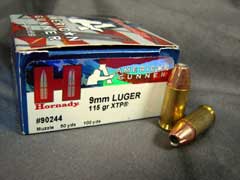
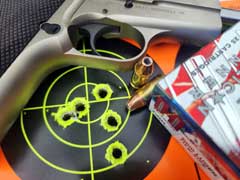
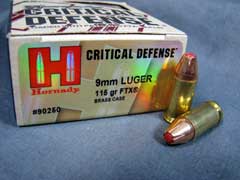
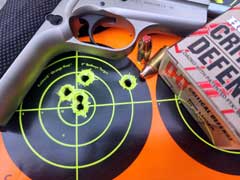
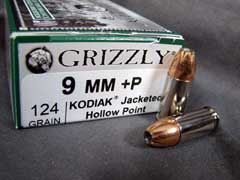
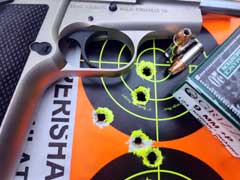
The Inglis P-35 N ran perfectly and accurately using a variety of modern
hollowpoint loads. 5-shot groups at 5 yards (15 feet), fired standing offhand.
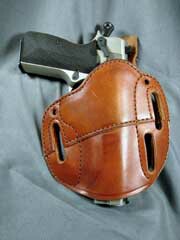
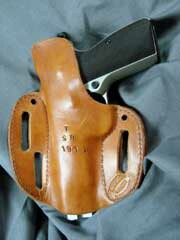
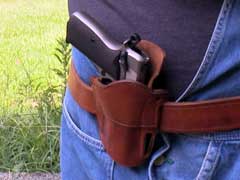
Simply
Rugged DEFCON 4 Holster.
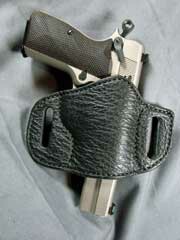
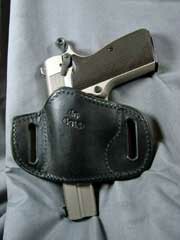
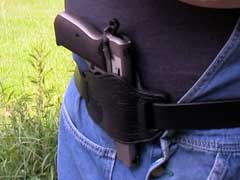
Simply
Rugged CID SLIDE Holster.
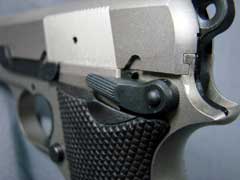
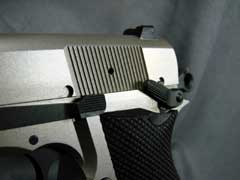
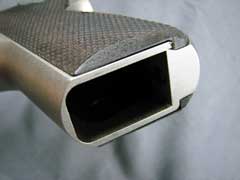
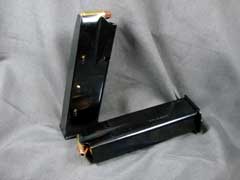

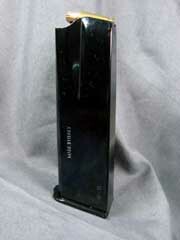
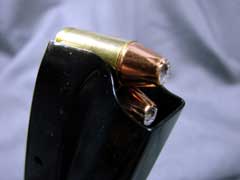
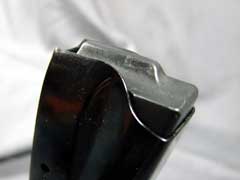
15-round steel magazines can be used in original Browning High Power
pistols, and 13-round High Power magazines can be used in the Inglis P-35 N.
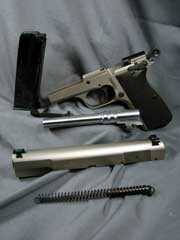
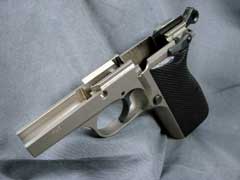
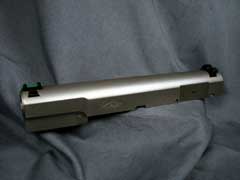
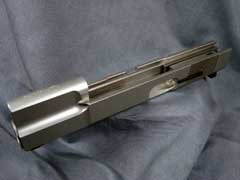
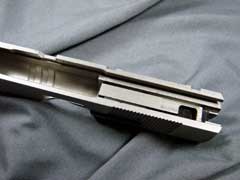
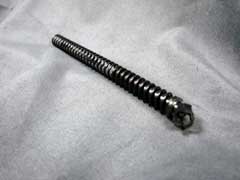
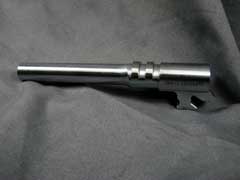
|
![]()